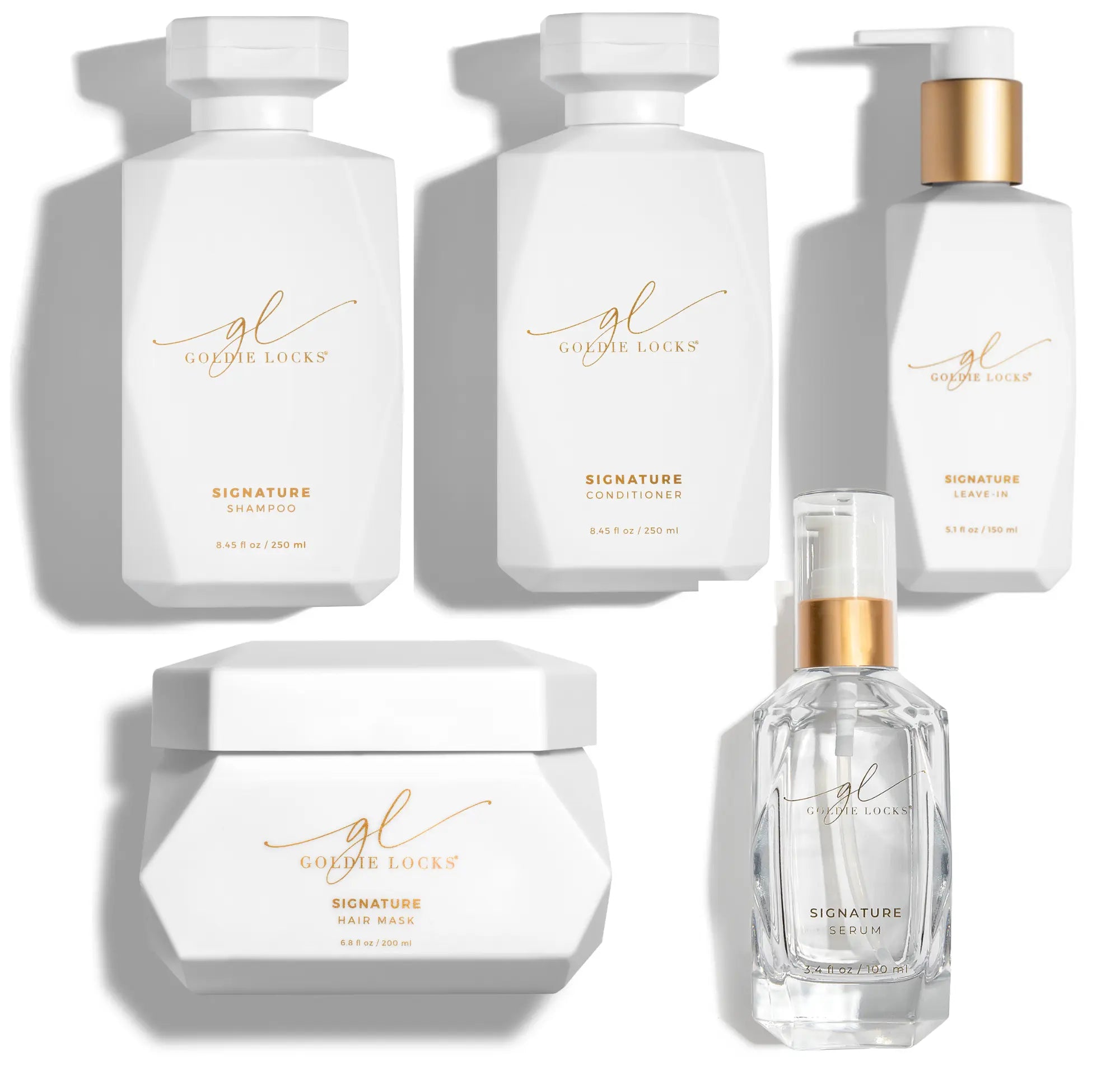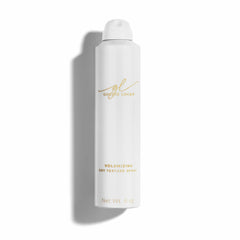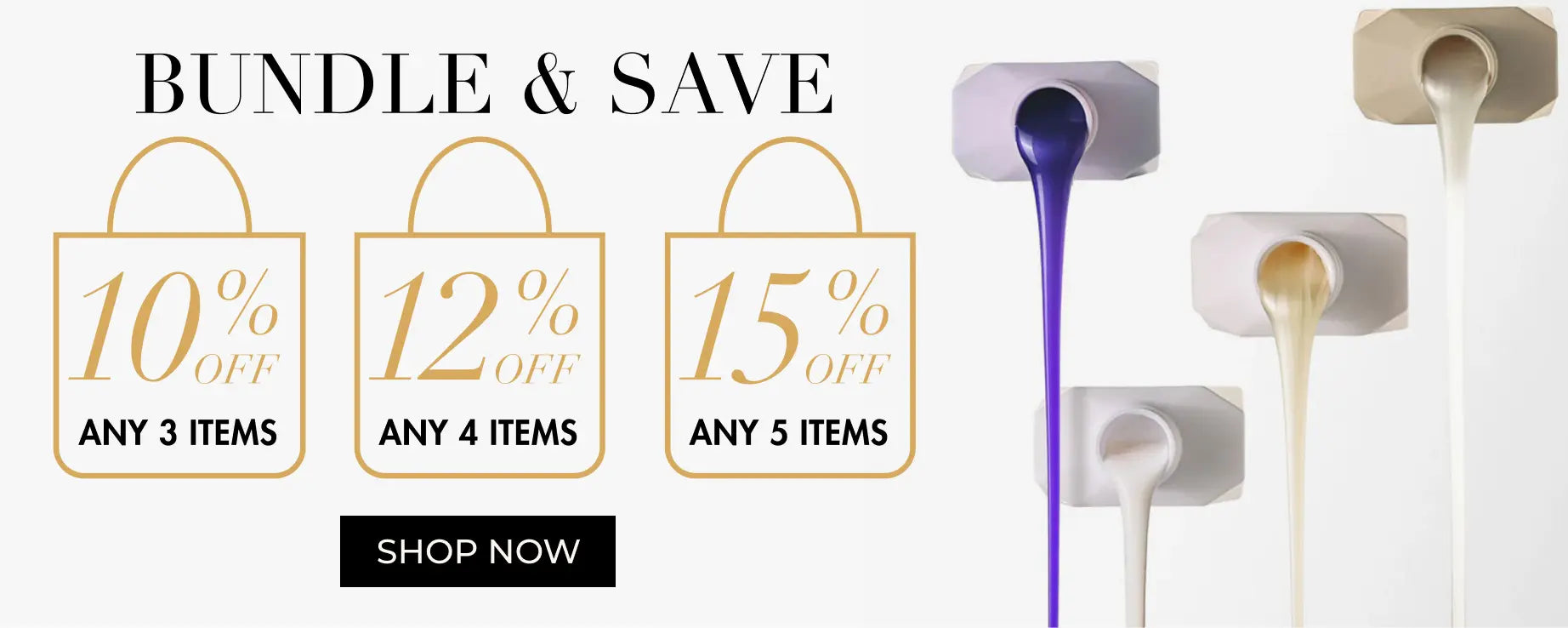If you’ve been blessed with curly hair, you most likely know how important proper care is to help it look and feel its best. Understanding what works for you is key to both maintenance and styling.
How you care for your curls depends on your unique curl pattern and texture as each curl type has specific needs—from hydration to styling techniques.
Keep reading to discover the most effective way to care for your curly hair, and enjoy healthier and bouncier curls every day!
Index
What Are the Different Types of Curly Hair?

Hair types and textures are generally classified into four main groups:
- Type 1 (straight)
- Type 2 (wavy)
- Type 3 (curly)
- Type 4 (coily)
Each group is further divided into subcategories, based on the diameter of the hair strand and the intensity of the curl pattern—ranging from more subtle (A), to medium (B), to tight or strong (C).
The primary differences between wavy, curly, and coily hair types are defined by their curl pattern, porosity, density, and strand width.
Wavy Hair (Type 2):
Wavy hair features a loose, S-shaped pattern that falls between straight and curly textures. It usually lies flatter on the scalp and has less volume at the roots compared to curlier types.
Curly Hair (Type 3):
Curly hair is known for its springy, corkscrew-like texture. Curls can range from loose to tight, but they’re more defined than waves and typically have more bounce, volume, and shape.
Coily Hair (Type 4):
Coily hair has tight corkscrews or a zigzag (“Z”) pattern, forming small, densely packed curls often referred to as kinky or afro-textured hair. It tends to have significant volume, shrinkage, and requires more moisture to stay healthy and defined.
Types of Curly Hair Chart

Characteristics of Different Curl Types
Depending on the curl type, each hair texture has its own unique characteristics and requires customized care.
Wavy Hair

Type 2 hair typically has medium density, offers some natural volume, and can be easily weighed down by heavy styling products. It may experience moderate frizz, especially in humid conditions.
| 2A | 2B | 2C |
|---|---|---|
| Waves are loose with a tousled texture. They tend to be straight at the roots, while the lengths form soft, gentle waves. | Waves have a tighter "S" shape than 2A. The pattern is more defined but still soft and loose. | The waviest of this category, 2C waves can form loose corkscrews when styled and are more prone to frizz. |
Styling Tip: Use lightweight products to enhance your waves while keeping them soft and bouncy.
Curly Hair

Type 3 hair has a more defined spiral pattern that ranges from loose to tight curls. It typically has medium to thick density and is more prone to frizz, especially when not properly moisturized.
| 3A | 3B | 3C |
|---|---|---|
| The loosest curly hair type, with a bouncy texture and silky, well-defined curls. | Features a springy, spiraled curl that’s more prone to frizz and may require extra moisture and care. | The tightest curl in Category 3, with lots of volume, texture, and more defined coils. |
Styling Tip: Use products that help define curls and combat frizz, keeping them smooth and bouncy.
Coily Hair

Type 4 hair features densely packed curls that form a zigzag pattern. It has the tightest curl pattern of all hair types, often appearing thick and voluminous. Coily hair requires constant hydration to maintain curl definition and minimize frizz.
| 4A | 4B | 4C |
|---|---|---|
| Tight coils, about the width of a crochet needle, with strong curl definition. | Densely packed "Z" shaped coils that may be difficult to distinguish at the root but are more visible at the ends. | The most delicate and densely packed zigzag pattern, with significant shrinkage and tightness. |
Styling Tip: Focus on moisturizing products and deep conditioning treatments to maintain curl elasticity.
Common Mistakes to Avoid With Curly Hair
To help maintain healthy, bouncy curls, avoid these common mistakes:

Skipping Moisture
Neglecting moisture can lead to dryness, frizz, and breakage. Curly hair requires constant hydration, so use a leave-in conditioner, moisturizing hair mask, and deep conditioning treatments to lock in moisture and keep curls soft and defined.

Using the Wrong Products
Not all curl types need the same products. Using the wrong one can weigh down your curls or make them frizzy. Make sure you’re using products specifically designed for your curl type, such as sulfate-free shampoos and creams that help hold curls.

Towel-Drying
Rubbing your curls with a towel can lead to frizz and breakage. Instead, use a microfiber towel to gently blot or scrunch your curls dry. This method helps preserve curl shape and reduces frizz.

Over-Washing
Washing your hair too often can strip it of its natural oils and disrupt your natural curl pattern. Try washing two to three times a week. In between washes, co-wash or use dry shampoo to refresh your curls.

Using Excessive Heat
Excessive heat styling, such as straightening or curling, can damage curly hair, causing it to lose its natural pattern, become dry, or break. Avoid using heat styling tools as much as possible, and always apply a heat protectant spray to prevent damage.

Detangling Hair When It's Dry
Always detangle curly hair when it’s wet and conditioned. Attempting to detangle dry curls can cause breakage. Use a wide-tooth comb to detangle from the tips and work your way up.

Avoiding Trims
Regular trims are necessary for all hair types to maintain growth and health. Leaving curly hair untrimmed for too long will cause split ends, making curls look limp and damaged. Trim curls every 6-8 weeks to keep them fresh, defined, and healthy.

Not Protecting Your Curls at Night
Failing to protect your curls while you sleep can undo your styling efforts. Sleeping on a cotton pillowcase creates friction, which leads to frizz and tangles. Use a silk or satin pillowcase or wrap your hair to protect it overnight.

Weighing Down Hair with Product
Using too much product can weigh down your curls, making them look limp and greasy. Apply only the necessary amount of product based on your hair’s needs. Opt for lightweight products that enhance your curls.

Being Inconsistent with Your Curl Routine
Caring for curly hair requires consistency. Skipping steps in your hair care routine can result in poor and unhealthy results. Stick to a routine that moisturizes, defines, and protects your curls.
Curly Hair Maintenance and Daily Care Routine
Maintain healthy curly hair with the following care routine:
Your Daily Routine:

- After washing, apply curl cream to seal in hydration and gently detangle using your fingers or a wide-tooth comb.
- Keep hair hydrated throughout the day. Use a curl refresher spray or lightly mist with water, then apply a leave-in conditioner to revive curls.
- Style your hair in loose buns, braids, or a pineapple at night, and sleep on a silk or satin pillowcase to protect your curls.
Your Weekly Routine:

- Use a sulfate-free shampoo or co-wash to deeply cleanse the scalp and hair once a week.
- Apply a deep conditioning mask to restore moisture and elasticity. Detangle your curls thoroughly using your fingers or a wide-tooth comb.
- Apply a leave-in conditioner and curl-defining cream to style your curls. Scrunching them can help enhance your curl pattern.
Your Monthly Routine:

- Remove product and debris buildup by washing once a month with a clarifying shampoo.
- Trim your ends every 6-8 weeks to encourage healthy hair growth.
Best Tips for Gorgeous Curls:

- Moisture is key. Hydrated curls are defined and frizz-free curls.
- Detangle when wet and conditioned, never brush dry curls.
- Avoid excessive heat and super-tight hairstyles that stress the hair. The less manipulation, the better.
Final Thoughts
All curls deserve to be enhanced and showcased in their natural form, so be consistent with your care routine, gentle when handling your curls, and always keep them moisturized.
Be patient, learn your curls' needs, adjust your routine as you go and embrace your natural pattern—whether loose waves or tight coils—for healthier and bouncier curls every day.


























